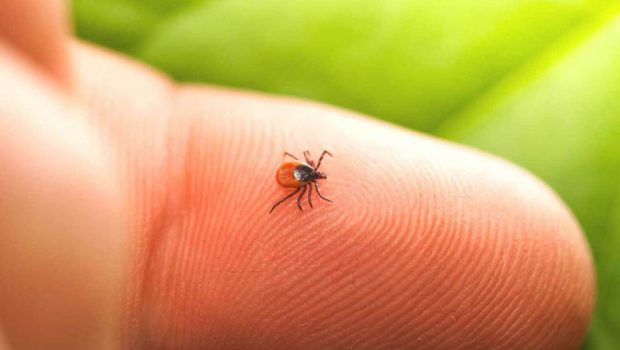How to Safeguard Against Ticks and Lyme Disease
by Mia K. Frezzo
Since Lyme disease was new and believed to originate in Lyme, Connecticut, it has spread throughout the country. During that time, the Lyme vaccine for dogs was not yet available. There are 12 North American species of ticks, and the most populous is the American Dog Tick. There are more ticks in the United States than ever before, and they are out nearly every month of the year in many warmer regions. In 2017, the Centers for Disease Control and Prevention recorded 59,349 cases of tick-borne diseases, increase=ing from 48,610 in 2016. Lyme disease is now the most commonly reported tick-borne disease in the U.S..
Ticks carry numerous diseases which can pose a threat to the entire family. A tick requires a host at each life stage to advance to the next stage, yet ticks can remain dormant for up to one year without feeding. Additionally, they have adapted to be a danger all year-round as their species has evolved. Most of a tick’s life is spent attached to the host, which makes them very difficult to control. They survive cold winter months with the help of a special “antifreeze” protein in their blood that is generated by the diseases ticks carry in order to help them survive the colder months.
An infected tick is more likely to withstand the winter than an uninfected tick. When spring arrives, the risk of disease transmission is higher due to survival rates of the disease-carrying ticks. Tick-borne diseases can have profound and lasting effects on health. Recently, research has confirmed the high likelihood of kidney disease in dogs that have contracted Lyme disease, even when the illness was readily recognized and treated.
Ticks are attracted to movement, including construction or vibrations within the grass. They attach to their host or prey simply by reaching for them. This behavior is called questing. A tick perches on a blade of grass and extends their front legs toward the passing dog, deer or person. Ticks do not jump or fly. They just need a little contact to silently and unnoticeably find their way to a pet or person. The tick’s goal is to firmly attach to the skin and feed by sucking blood.
We often do not realize a tick has landed on us or has attached to our bodies. They produce anti-inflammatory proteins that allow them to hide from the host’s immune system. In other words, the tick is undetected by the dog or person upon which it is attached because these proteins conceal inflammation caused by their bite and subsequent feeding. Once attached, ticks will feed for three to 14 days before falling off. After feeding, females typically lay several thousand eggs and die soon after.
Because of the inherent protective mechanisms a tick possesses, their ability to survive extreme temperatures and their irreducible population in many areas, tick prevention for our pets and ourselves is imperative. Monthly flea and tick preventatives are an effective option for pets. In conjunction with traditional methods, applying safe and effective essential oils can augment traditional preventatives or potentially replace them. Essential oils are metabolized within a few hours, so frequent application is necessary.
Some examples of essential oils which effectively repel pests include arbor vitae, rosemary, lemongrass and cedar wood. Owners can apply diluted essential oils topically to their dog and themselves to ward off pests, as well as create a natural essential oil tick repellant collar. The severity of the diseases carried by ticks demands an attentive and proactive approach to protect both ourselves and our pets.
Dr. Mia K. Frezzo is a member of the doTERRA International Veterinary Advisory Board and co-author of SpOil Your Pet: A Practical Guide for Using Essential Oils in Dogs and Cats, which contains an easy recipe for a natural flea and tick repellant collar. For more information about essential oils and natural health, call 201-288-7800 or email Info@VetInHeights.com.





























